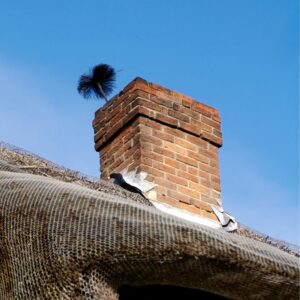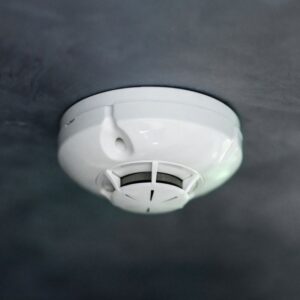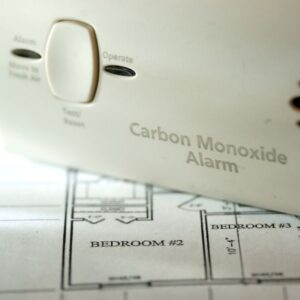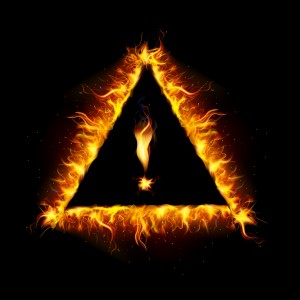If you own a fireplace, you may notice some bad odors creeping into your home as outdoor temps rise and humidity increases. Dealing with these nasty smells is never fun. However, Lords Chimney has solutions for you! Learn more below. Afterwards, contact us today to see how we can help you out!
✔️ Scheduling a Cleaning
 First things first, you’ll want to get your annual cleaning scheduled. This is so that any soot, creosote, or other debris is properly removed. By doing this, it ensures your fireplace is safe for regular use. In addition, it can do a lot when it comes to minimizing odors! You see, all of these materials smell less than ideal. When negative air pressure sweeps down your chimney, it brings these nasty odors with it! Remove creosote and say good-bye to a lot of the nasty smells you’re facing.
First things first, you’ll want to get your annual cleaning scheduled. This is so that any soot, creosote, or other debris is properly removed. By doing this, it ensures your fireplace is safe for regular use. In addition, it can do a lot when it comes to minimizing odors! You see, all of these materials smell less than ideal. When negative air pressure sweeps down your chimney, it brings these nasty odors with it! Remove creosote and say good-bye to a lot of the nasty smells you’re facing.
When scheduling your cleaning, you’ll definitely want to ensure your sweep is CSIA trained and certified, like the staff at Lords Chimney. Count on us for care you can trust!
✔️ Control Air Pressure
While a cleaning will definitely help, you still may find yourself facing some issues with smell. To put a final stop to this, you’ll need to find a way to control the air pressure in your home, so that outside air doesn’t keep coming down your chimney. Introducing new air somewhere else in the home (i.e. opening a window) may help, but that still doesn’t always solve the problem.
We recommend installing a top-sealing damper. This will seal off your chimney, so that downdrafts are no longer a problem. Top-sealing dampers also keep bad weather, animals, and dirt/debris out of your chimney, ensuring your entire appliance in better condition all year long.
At Lords Chimney, we have the products you need! We sell and install top-sealing dampers, and we will be sure to set you up with the right size for your specific situation. Trust in our experts to set you up right!
✔️ Avoid Water Issues
Excess moisture and water in your chimney can trigger some big issues and bad smells, so taking the proper precautions and investing in preventative maintenance beforehand may help eliminate bad odors. There are lots of things we can do to keep water away for good. Replacing your chimney cap, fixing your flashing, rebuilding your crown, tuckpointing, and waterproofing are all effective services that stop moisture from entering your chimney system.
✔️ Check for Animals
 Sometimes, the issue doesn’t lie with high temperatures or humid days at all. It’s not uncommon for animals to nest in your chimney, especially if you haven’t used it much lately, and sometimes these animals wind up stuck. If a critter passes away in your flue or chimney, you’ll definitely face some serious odors. If your system has been recently cleaned, and you know everything is sealed up tight, consider this option.
Sometimes, the issue doesn’t lie with high temperatures or humid days at all. It’s not uncommon for animals to nest in your chimney, especially if you haven’t used it much lately, and sometimes these animals wind up stuck. If a critter passes away in your flue or chimney, you’ll definitely face some serious odors. If your system has been recently cleaned, and you know everything is sealed up tight, consider this option.
Fortunately, there’s an easy, affordable, and effective way to ensure animals stay out for good. By having our team of experts install a chimney cap, you guarantee yourself high-quality protection at a price that won’t break the budget. Chimney caps are placed over the flue, so no animals can work their way in, and they are known for keeping out water and excess moisture, too.
Still Have Problems? Give Us a Call
If you have tried everything, and you are still noticing nasty odors, there are still a few things that may be going on. Excess moisture, decaying animals, and debris build-up/clogs are all reasons why your chimney may stink. It’s best to hire a professionally trained chimney expert to assess your situation and locate the true cause of the issue.
We want to help! Let us find what’s causing stink in your chimney and help you resolve it. You don’t need to deal with chimney issues any longer. Let us set you up right, so you can enjoy your fireplace to the fullest all year long! Call on our staff today or visit our website to learn more. We can’t wait to serve you!
A deadly toxic gas that can enter your home if you have venting problems with your chimney or other heating unit, carbon monoxide is responsible for killing over 400 Americans by unintentional poisoning annually.
According to the Centers for Disease Control and Prevention (CDC), carbon monoxide poisoning also sends over 20,000 people to the emergency room, and more than 4,000 people end up having to be hospitalized due to carbon monoxide poisoning. This is why it’s very important to have your chimney inspected annually to ensure your chimney system is venting properly.
Our Chimney Safety Institute of America-certified technicians, who are experienced with solving carbon monoxide issues, would like to tell you more about this toxic gas that can silently enter your home and cause serious health damage…
What Is Carbon Monoxide Gas?
 Carbon monoxide is a colorless, odorless, tasteless, and extremely toxic gas that is produced by burning fuels. Carbon monoxide is often called the “silent killer” because due to its properties, it is impossible to detect without specific equipment.
Carbon monoxide is a colorless, odorless, tasteless, and extremely toxic gas that is produced by burning fuels. Carbon monoxide is often called the “silent killer” because due to its properties, it is impossible to detect without specific equipment.
Carbon monoxide is produced by the incomplete combustion of fuels, including the wood, natural gas, or propane you use to heat your home. Depending on the type of heating appliance you have, your appliance may either burn hot enough to combust all traceable levels of carbon monoxide, or it will be vented out of your home through a chimney or ventilation system. If a ventilation system becomes blocked, such as from soot, debris, or nesting animals, carbon monoxide can be forced back into your home rather than exiting through the chimney or ductwork. A malfunctioning appliance also can cause a carbon monoxide hazard.
Its many sources include burning coal, wood, charcoal, oil, natural gas, kerosene, and propane. This means that most fireplaces, stoves, grills, space heaters, water heaters, furnaces, and even vehicles produce carbon monoxide gas. However, these appliances are normally either properly vented or located outdoors so they pose little to no risk to homeowners and their families.
What Are the Symptoms of Carbon Monoxide Poisoning?
Headache, dizziness, nausea, vomiting, weakness, chest pain, and confusion are all symptoms of low-level carbon monoxide poisoning. Since these symptoms are so similar to the flu or the common cold, carbon monoxide poisoning can be difficult to diagnose.
If you believe that you are experiencing the symptoms of carbon monoxide poisoning, immediately move to a fresh air location. Ideally this is outside, but can also be next to an open door or window. Call Poison Control and local emergency services before reentering the building.
If you persist in having these symptoms, ask your doctor for a carbon monoxide level blood test. High-level symptoms include organ damage, loss of consciousness, and death.
How Does Carbon Monoxide Poisoning Happen?
For some reason, your red blood cells would rather pick up carbon monoxide than oxygen. If there is a lot of carbon monoxide in the air, your body may replace all of the oxygen in your blood with carbon monoxide, blocking oxygen from entering your body, causing tissue damage and resulting, possibly, in death. Tissues can also be destroyed by carbon monoxide teaming up with the proteins in tissues.
How Do I Prevent Carbon Monoxide Leaks From My Chimney?
 Have your fireplace and chimney cleaned and inspected by a reputable chimney company like Lords Chimney every year.
Have your fireplace and chimney cleaned and inspected by a reputable chimney company like Lords Chimney every year.- Generators and grills should never be used indoors or in enclosed spaces such as garages or sheds.
- If you are purchasing a gas fireplace, be sure it carries the seal of a national testing group, such as the CSA Group.
- If your heat ever goes out, never use a portable flameless chemical heater indoors, and do not use your stove or oven to heat the home, either. Although they do not have a flame, they do burn gas and can cause carbon monoxide to build up inside your house.
- Do not allow cars to idle in garages, even when the garage door is open.
- Move grills away from windows and doors.
- Most importantly, install a battery-operated carbon monoxide detector in your home, and check and/or replace the batteries when you reset your clocks in the spring and fall.
How Do I Vent My Gas Appliances Properly?
Firstly, never burn anything in a fireplace that is not vented. Secondly, never patch a vent pipe with tape, gum, or anything else, which could cause carbon monoxide to build up more quickly. Thirdly, your indoor vent pipes should go up slightly as they go towards the outside. This helps prevent toxic gases from leaking if the joints or pipes are not fitted properly.
Questions? Give Us a Call
If you have any more questions about carbon monoxide, contact us today. Our experienced staff can answer whatever else you need to know about the dangers of carbon monoxide poisoning.
Everything You Need to Know About Creosote
What is Creosote?
Creosote is a chemical byproduct that is produced after the distillation of tar. So when wood is burned, creosote is produced. It is known for its preservative properties and for being anti-septic. There are basically two types of creosote; the wood-tar, and the coal-tar. The wood-tar creosote, being less toxic, is commonly used in meat preservation, wood treatment and for medicinal purposes. When used medicinally, it is commonly utilized as an astringent, anesthetic, expectorant, laxative and anti-septic. The coal-tar creosote is more commonly used in wood preservation because of its toxic properties.

In its early stages of accumulation, creosote is flaky. As it left to build…it becomes more tar-like. All creosote is highly flammable.
Creosote in Chimney
There are several stages that the creosote in your chimney that you may experience. First is its’ soot: a flaky form that is easy to remove leaving the flue walls unobstructed. Second: the stage where it leaves brittle and hard deposits that are a bit more difficult to remove. The third is the glazed stage where it becomes dangerous and much more difficult to remove. Once you notice the dense, dark and shiny tar-like appearance, then this would indicate that the creosote has reached its glazed stage. There will always be some level of creosote in your chimney – as it is a natural byproduct of burning, but it doesn’t need to be left to accumulate.
Possible Dangers
The longer creosote is ignored…the greater the possible danger. Creosote is highly flammable and is a leading cause of chimney fires. You may see products, such as a log that is supposed to remove creosote while burning. Not only is this difficult to gauge in its effectiveness, it may also cause chunks of creosote to fall down your flue and get stuck along the way. Because of the fire risk, you should leave creosote removal to a professional.
Preventive Measures
To avoid higher risk for a catastrophe, don’t wait for your chimney to reach a disastrous level of creosote build-up. It is best to schedule regular chimney inspections and sweeping on an annual basis. This way you know you are not letting the buildup become a hazard. This also prolongs your chimney’s lifespan.
We hope that this has been helpful and sufficient in answering your questions about creosote. So now you are fully equipped with the knowledge to better protect and improve your home. If you have a chimney, make sure to have it checked regularly and make it a habit to schedule a regular inspection and sweeping by a chimney professional.
 First things first, you’ll want to get your annual cleaning scheduled. This is so that any soot, creosote, or other debris is properly removed. By doing this, it ensures your fireplace is safe for regular use. In addition, it can do a lot when it comes to minimizing odors! You see, all of these materials smell less than ideal. When negative air pressure sweeps down your chimney, it brings these nasty odors with it! Remove creosote and say good-bye to a lot of the nasty smells you’re facing.
First things first, you’ll want to get your annual cleaning scheduled. This is so that any soot, creosote, or other debris is properly removed. By doing this, it ensures your fireplace is safe for regular use. In addition, it can do a lot when it comes to minimizing odors! You see, all of these materials smell less than ideal. When negative air pressure sweeps down your chimney, it brings these nasty odors with it! Remove creosote and say good-bye to a lot of the nasty smells you’re facing. Sometimes, the issue doesn’t lie with high temperatures or humid days at all. It’s not uncommon for animals to nest in your chimney, especially if you haven’t used it much lately, and sometimes these animals wind up stuck. If a critter passes away in your flue or chimney, you’ll definitely face some serious odors. If your system has been recently cleaned, and you know everything is sealed up tight, consider this option.
Sometimes, the issue doesn’t lie with high temperatures or humid days at all. It’s not uncommon for animals to nest in your chimney, especially if you haven’t used it much lately, and sometimes these animals wind up stuck. If a critter passes away in your flue or chimney, you’ll definitely face some serious odors. If your system has been recently cleaned, and you know everything is sealed up tight, consider this option.

 Carbon monoxide is a colorless, odorless, tasteless, and extremely toxic gas that is produced by burning fuels. Carbon monoxide is often called the “silent killer” because due to its properties, it is impossible to detect without specific equipment.
Carbon monoxide is a colorless, odorless, tasteless, and extremely toxic gas that is produced by burning fuels. Carbon monoxide is often called the “silent killer” because due to its properties, it is impossible to detect without specific equipment. Have your fireplace and chimney cleaned and inspected by a reputable chimney company like Lords Chimney every year.
Have your fireplace and chimney cleaned and inspected by a reputable chimney company like Lords Chimney every year.